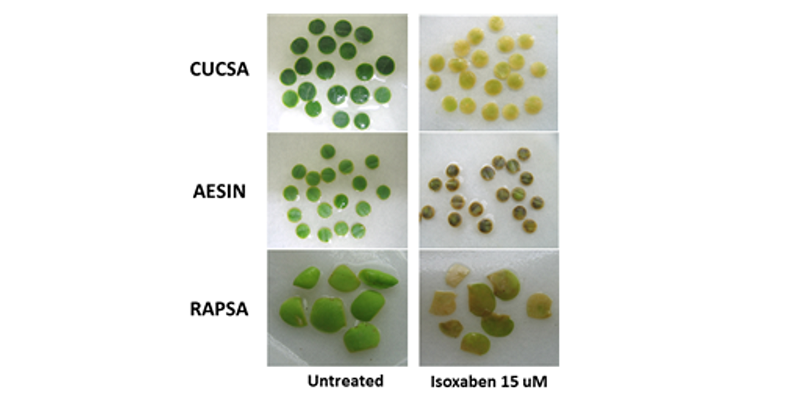Abstract
Cellulose biosynthesis pathway has been recognized as a very important physiological process in a new herbicide development these days. If cellulose biosynthesis inhibitors (CBI) were able to be discerned at once through CBI-specific symptoms with general wild type plants, that would be a very useful means for developing CBI rapidly and in a low cost. In this study, its possibility was investigated and compared among three assays (leaf disc, seedling dipping, and germination/seedling growth assay) with various plant species and compounds of a different mode of action. The results suitable for the purpose of this study were obtained only in germination/seedling growth assay (GSGA). In GSGA, seedling growth inhibition was commonly exhibited in all tested herbicides. Expansion of hypocotyl/root part was shown in the treatment of dithiopyr (microtubule assembly inhibitor), florpyrauxifen-benzyl (auxin-like activator), isoxaben and flupoxam (celluose biosynthesis inhibitor), but not in butachlor (very long chain fatty acid inhibitor). On the other hand, browning of hypocotyl/root part was typically observed only in application of isoxaben and flupoxam known as CBI to indian jointvetch, perilla, basil and lettuce among tested seeds. Above these results suggested that CBI was able to be screened simply and easily through CBI-specific response patterns of seedling germinated from specific seeds.
Figures & Tables

Fig. 1.Effect of isoxaben (15 μM) on the growth and color changes of leaf discs excised from (CUCSA), (AESIN) and (RAPSA) cotyledons.


